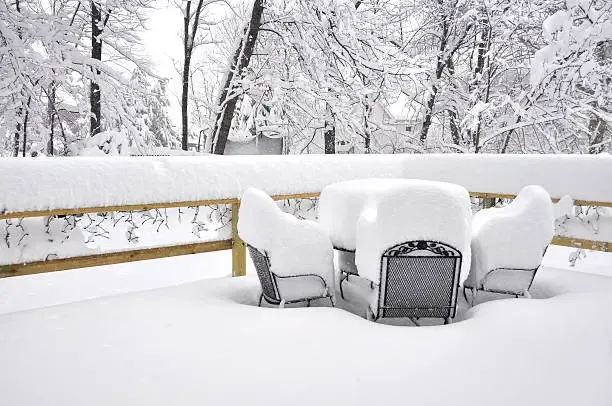
What Is the Best Way to Wrap Patio Furniture for Winter?
Share
As the chill of winter approaches, it’s essential to protect your patio furniture from harsh weather. Proper wrapping can prolong the life of your outdoor pieces, keeping them in excellent condition for the next season. So, what is the best way to wrap patio furniture for winter? Let’s delve into this topic!
Understanding the Importance of Wrapping
Wrapping your patio furniture isn’t just about aesthetics; it’s about preservation. Exposure to snow, rain, and ice can lead to rust, mold, and deterioration. Protecting your furniture ensures that it remains functional and beautiful year after year. By taking a few simple steps, you can save yourself from costly replacements and repairs.
Choosing the Right Materials
The first step in wrapping your patio furniture is to choose the right materials. You’ll need:
Furniture Covers: Invest in high-quality, weather-resistant covers. Look for ones made from breathable fabrics to prevent moisture buildup, which can lead to mold.
Tarps: If you don’t have specific furniture covers, heavy-duty tarps can work in a pinch. Ensure they’re secured tightly to avoid wind damage.
Bubble Wrap: For delicate pieces, using bubble wrap can provide extra cushioning against impacts.
Rope or Bungee Cords: These will help secure your coverings tightly, ensuring they don’t blow away.
Cleaning Your Furniture
Before you wrap your furniture, it’s crucial to clean it thoroughly. Dust, dirt, and debris can trap moisture, leading to damage. Here’s how to do it:
Remove Debris: Clear off leaves and any other debris from the surfaces.
Wash: Use mild soap and water to wash your furniture. For metal furniture, consider a specific metal cleaner to prevent rust.
Dry: Ensure everything is completely dry before wrapping. Moisture trapped underneath can cause mold and mildew.
Wrapping Techniques for Different Materials
Depending on the type of patio furniture you have, the wrapping technique might differ.
Wood Furniture: Wrap wood pieces with breathable covers. You can also use bubble wrap on corners for added protection. Avoid plastic as it can trap moisture.
Metal Furniture: Metal is prone to rust, so cover it with a weather-resistant cover. For extra protection, use a rust-inhibiting spray before wrapping.
Wicker Furniture: Wicker is delicate and can be damaged easily. Use a breathable cover and avoid heavy weights on top.
Fabric Cushions: Store cushions indoors if possible. If you must leave them outside, use waterproof covers to protect against moisture.
Securing the Covers
Once your furniture is clean and wrapped, it’s time to secure everything in place. Use rope or bungee cords to tie down the covers, ensuring they’re snug but not too tight. This will prevent wind from lifting them and exposing your furniture.
Storing Your Furniture
If you have the space, consider storing your furniture indoors during the winter months. This offers the best protection against the elements. If indoor storage isn’t an option, choose a sheltered location, like a garage or shed, to minimize exposure.
Check Regularly
Even though your patio furniture is wrapped, it’s still a good idea to check on it every few weeks. Snow or rain could accumulate on the covers, so make sure to brush it off to prevent heavy buildup. This will help avoid sagging and potential damage to the furniture underneath.
Also, if there are any signs of wear on your covers, such as rips or tears, repair them immediately or replace them to maintain maximum protection.
Bonus Tip – Keep It Elevated
If possible, elevate your furniture slightly off the ground. This can be done using bricks or special furniture risers. By lifting the furniture off the ground, you reduce the chances of moisture seeping into the legs and bases of your furniture.
This is especially helpful for wooden furniture, as water absorption can lead to rotting and warping over time.
Additional Tips for Winter Furniture Care
Check Regularly: Throughout the winter, take a few moments to check on your wrapped furniture. Make sure the covers are still secure and that no moisture is building up underneath.
Remove Snow: If snow accumulates on your furniture covers, gently brush it off. Heavy snow can cause tears and damage.
Inspect in Spring: Once winter is over, inspect your furniture for any damage. Remove the covers and clean your furniture again to prepare it for use.
Conclusion
Wrapping your patio furniture for winter is a straightforward but essential task. By taking the time to clean, wrap, and secure your pieces properly, you can ensure they remain in great shape. Investing in good materials and following these simple steps will save you time and money in the long run.
Related blog: What to put under patio furniture?


